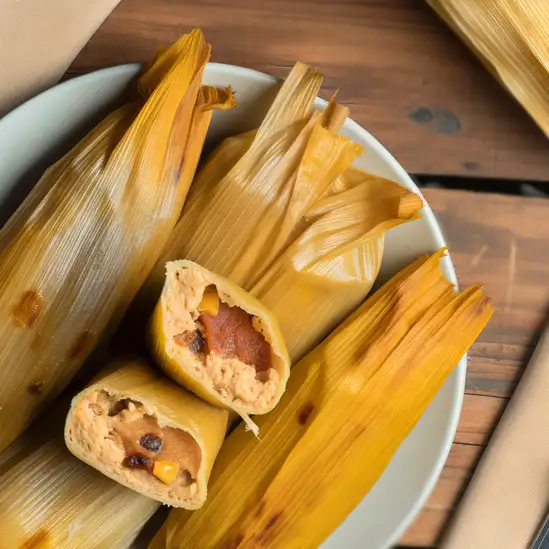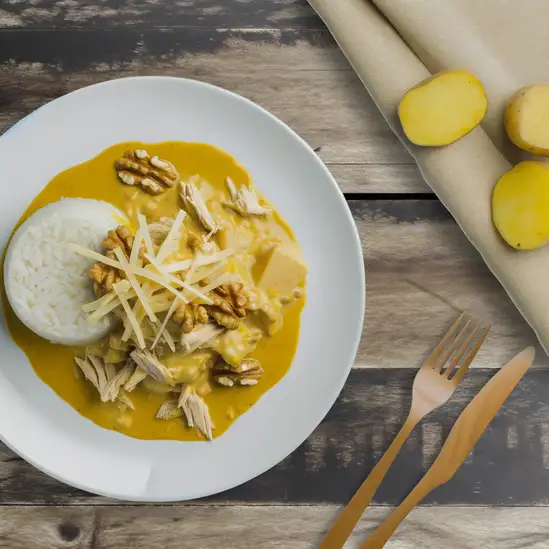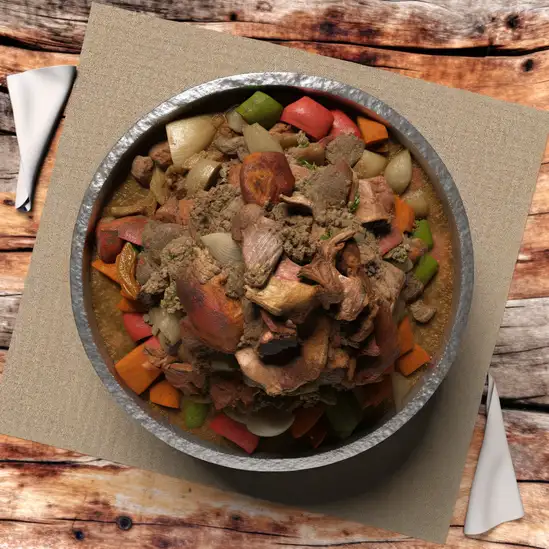



If you ever find yourself wandering through the Sacred Valley,Ollantaytambo is the kind of place that wraps around you like a warm,familiar blanket. The moment you step into its cobbled streets,there’s this hum of history and life blending together—the chatter of locals,the clatter of horses’ hooves,and the faint scent of roasted corn and fresh earth after a morning rain. It’s a town where the past isn’t just preserved behind glass; it’s alive in the terraces carved into the mountains,the ancient stone walls,and the daily rhythms of market vendors selling vibrant textiles and fresh produce. What’s truly captivating about Ollantaytambo is how it feels like a living museum. You can climb those massive Inca ruins that overlook the town,tracing the steps of warriors and farmers from centuries ago,all while the Andes stretch endlessly around you. The air is crisp and carries a whisper of wild herbs and pine,and if you’re lucky,you’ll catch the distant melody of traditional flutes drifting from a nearby home. But beyond the history and scenery,it’s the people who make Ollantaytambo unforgettable. There’s a genuine warmth in their smiles and a quiet pride in their culture that invites you to slow down and soak it all in. Whether you’re sipping coca tea in a sunlit café or bargaining for handwoven scarves at the market,you’ll feel connected—to the land,the stories,and the spirit of a place that’s both timeless and vibrantly alive.
The information on this page is currently being reviewed by Tripkliq and should be used as a guide only
Eng word: Hello
Eng pronunciation: Ree-my-kool-yai-kee
Local language: Rimaykullayki
Eng word: Goodbye
Eng pronunciation: Too-pah-nahn-chees-kah-mah
Local language: Tupananchiskama
Eng word: Thank you
Eng pronunciation: Sool-pai-kee
Local language: Sulpayki
Eng word: How much
Eng pronunciation: Hi-kah
Local language: Hayk'a
Eng word: Toilet
Eng pronunciation: Wah-see-chah
Local language: Wasicha
Eng word: Help me
Eng pronunciation: Yah-nah-pai-wai
Local language: Yanapayway
Eng word: Yes
Eng pronunciation: Ah-ree
Local language: Arí
Eng word: No
Eng pronunciation: Mah-nah
Local language: Mana
Eng word: Excuse me
Eng pronunciation: Dees-pen-sah
Local language: Dispensa
Ollantaytambo is one of the most monumental architectural complexes of the ancient Inca Empire, often referred to as the last living Inca city.
During the Spanish conquest of Peru, Ollantaytambo served as a strategic military, agricultural, and religious site, showcasing its importance in Incan society.
The Temple of the Sun, featuring six monolithic granite slabs, stands as a testament to the Incas' sophisticated stonework and architectural prowess.
Ollantaytambo is famed for its terraced fields, which are still used for agriculture today, highlighting the Incas' advanced understanding of farming and irrigation.
The town has been continuously inhabited since the 13th century, making it one of the oldest continuously occupied settlements in the Americas.
Ollantaytambo was once the royal estate of Emperor Pachacuti, who conquered the region and built the town with significant fortifications.
The hills surrounding Ollantaytambo feature impressive Incan storehouses, strategically placed to take advantage of the cooler mountain air to preserve foods.
Ollantaytambo is a premier archaeological site that offers insight into Incan civilization through its well-preserved ruins and structures.
Ollantaytambo serves as a key starting point for the Inca Trail to Machu Picchu, one of the world's most famous hikes, showcasing its historical significance as a route in the Incan road system.
In Ollantaytambo, the most common Power Adaptor is Type A, Type C.



Corn dough filled with various ingredients such as meats, cheeses, or vegetables, wrapped in corn husks, and steamed. They are a popular snack or breakfast item.

A popular stir-fry dish that combines marinated strips of beef with onions, tomatoes, and fried potatoes, typically served with rice.

A creamy chicken dish made with shredded chicken in a spicy, nutty sauce made from aji amarillo peppers, walnuts, and cheese, served with rice and boiled potatoes.

A traditional Andean dish that involves cooking meat, potatoes, and vegetables in an underground oven, using hot stones. It's a communal dish often enjoyed during festivals.

A traditional Peruvian dish made from guinea pig, which is seasoned, flattened, and fried until crispy. It's often served with potatoes and salad.

A traditional Peruvian beverage made from purple corn, boiled with pineapple, cinnamon, and cloves, then sweetened and served cold.
If you ever find yourself wandering through Provincia de Cusco,Peru,get ready to be swept up by a city that feels like a living,breathing tapestry of history and culture. The moment you step into its cobblestone streets,there’s this unmistakable hum—a blend of bustling markets,distant Andean melodies,and the chatter of locals weaving Quechua and Spanish together. The air carries a crispness,tinged with the earthy scent of fresh corn roasting nearby and the faint aroma of eucalyptus from the surrounding hills.
Cusco’s character is a beautiful collision of old and new. Colonial architecture stands shoulder to shoulder with ancient Incan walls,their stones perfectly fitted without mortar,whispering stories of a time long past. You can almost feel the pulse of the city’s rich heritage in every plaza and corner café. Sitting down with a cup of coca tea,watching the world go by,you’ll notice the vibrant textiles and colorful traditional clothing that locals wear with pride,a living testament to their roots.
What really makes Cusco unforgettable is its warmth—the people. They’re proud,welcoming,and eager to share their traditions,whether it’s through a lively festival,a hearty plate of ceviche,or a simple smile. And beyond the city,the breathtaking landscapes of the Sacred Valley and the awe-inspiring Machu Picchu are just waiting to be explored. Cusco isn’t just a place you visit; it’s a place that stays with you long after you’ve left.
If you ever find yourself wandering through the high Andes,Provincia de Puno feels like stepping into a living tapestry woven with vibrant colors,ancient traditions,and the crisp,fresh air of Lake Titicaca. The moment you arrive,there’s this unmistakable energy—a blend of serene calm and lively celebration. You’ll hear the distant hum of traditional Andean music mingling with the chatter of locals selling handwoven textiles,their fingers deftly crafting stories into every thread. The scent of roasted corn and fresh trout from the lake drifts through the air,tempting you to taste the region’s hearty,comforting flavors.
Puno’s streets pulse with a unique rhythm,where Quechua and Aymara cultures blend seamlessly with colonial influences. The people here carry a deep pride in their heritage,evident in the colorful festivals that light up the city,especially the famous Fiesta de la Candelaria. Watching locals dance in elaborate costumes,you’ll feel the weight of centuries-old stories and celebrations come alive right before your eyes.
What really stays with you,though,is the connection to the land and water. Standing on the shores of Lake Titicaca,the world feels vast and timeless. The cool breeze brushes your skin,and the endless blue stretches out,inviting you to explore floating reed islands or chat with fishermen who’ve lived here for generations. Puno isn’t just a place to visit—it’s a place to feel,to listen,and to be part of a story that’s still unfolding.
If you find yourself wandering through Provincia de Arequipa,you’ll immediately notice a certain warmth—not just from the sun that bathes the city in golden light,but from the people and the vibrant energy that pulses through its streets. Arequipa feels like a place where history and everyday life dance together effortlessly. The air carries a mix of aromas:freshly baked bread from corner bakeries,the smoky hint of local picanterías cooking up spicy rocoto relleno,and the faint,earthy scent of volcanic stone that shapes the city’s stunning colonial architecture.
Walking around,your eyes will be drawn to the gleaming white sillar stone buildings that give Arequipa its nickname,the "White City." The Plaza de Armas is a lively hub where locals and visitors mingle beneath the towering cathedral,while street musicians fill the air with Andean melodies that tug at your heart. There’s a rhythm here—slow enough to savor a cup of rich,dark coffee in a sunlit café,yet lively enough to keep you exploring winding alleys lined with artisan shops and colorful markets.
What really makes Arequipa unforgettable is its blend of cultures. You’ll hear Quechua spoken alongside Spanish,taste traditional dishes that have been perfected over generations,and feel the pride of a city that’s both fiercely independent and deeply connected to its roots. Whether you’re gazing at the snow-capped volcanoes on the horizon or sharing a laugh with a local over a plate of chupe de camarones,Arequipa invites you to slow down,breathe it all in,and become part of its story.
Lima feels like a city that’s constantly humming with life,where the old and new dance together in the most unexpected ways. Walking through its neighborhoods,you’ll catch the salty breeze from the Pacific mingling with the rich aroma of freshly grilled anticuchos (those delicious skewers of marinated meat). The streets buzz with the chatter of locals,the clatter of street vendors,and the distant strum of a guitar from a nearby plaza. It’s a place where colonial architecture stands proudly beside sleek modern buildings,and every corner seems to tell a story.
What really makes Lima special is its food scene—seriously,it’s a paradise for your taste buds. Imagine biting into a ceviche so fresh it practically tastes like the ocean itself,or savoring a perfectly crispy chicharrón sandwich while sipping on a sweet,tangy chicha morada. The city’s markets are alive with vibrant colors:piles of exotic fruits,heaps of fragrant spices,and the lively banter of vendors inviting you to try their goods. It’s a feast for all your senses.
Beyond the food and sights,Lima’s warmth comes from its people. There’s a genuine friendliness here,a pride in their culture that’s infectious. Whether you’re wandering the bohemian streets of Barranco or exploring the historic center,you’ll feel like you’re part of a living,breathing story. Lima isn’t just a stop on your trip—it’s a place that stays with you long after you leave.
Imagine stepping into a place where the Amazon River hums a steady,soothing rhythm and the air is thick with the scent of damp earth and blooming orchids—that’s Iquitos for you. This city feels like a vibrant crossroads between jungle wilderness and lively urban life,where colorful wooden boats bob along the riverbanks and markets overflow with fresh tropical fruits and spices. The streets buzz with a mix of chatter in Spanish and indigenous languages,and the warm,humid air carries the distant calls of howler monkeys and the occasional splash of a river dolphin.
What’s truly captivating about Iquitos is its unique blend of cultures. You’ll find locals who are deeply connected to the rainforest,sharing stories of medicinal plants and ancient traditions,alongside a growing community of artists and musicians who fill the evenings with soulful tunes and laughter. The city’s architecture is a charming patchwork of colonial-era buildings and rustic wooden houses,all painted in bright,cheerful colors that seem to reflect the energy of the place.
When you wander through the bustling markets,the taste of freshly caught river fish grilled over open flames mingles with the sweetness of exotic fruits like camu camu and aguaje. And if you venture just beyond the city,the jungle opens up in all its wild glory—thick canopies,hidden waterfalls,and the chance to spot creatures you’ve only read about. Iquitos isn’t just a destination; it’s an invitation to slow down,breathe deeply,and dive into a world where nature and culture dance together in perfect harmony.
Situated on the Bolivian side of Lake Titicaca,Copacabana is a charming lakeside city known for its access to Isla del Sol,a sacred island with Inca ruins and stunning views.
ExploreScammers may sell fake tickets to the Ollantaytambo archaeological site or Machu Picchu, leaving tourists unable to enter.
Unlicensed money changers may offer poor exchange rates or give counterfeit currency to unsuspecting tourists.
Unlicensed individuals may pose as official tour guides and offer subpar or inaccurate tours of the archaeological site or surrounding areas.
Scammers may sell fake train tickets to Machu Picchu, leaving tourists stranded at the station.
Vendors in markets or near tourist hotspots may inflate prices significantly for tourists, especially if they sense unfamiliarity with local currency.
Some taxi drivers may overcharge tourists, especially for short distances or trips to nearby attractions like the train station.
Some restaurants may add hidden charges or inflate the bill, assuming tourists won't notice or question the extra costs.
Some locals may offer unnecessary services, such as carrying luggage or guiding tourists to places they can easily find on their own, and then demand high tips.
The possession, use, and trafficking of illegal drugs are strictly prohibited in Peru, including Ollantaytambo. Penalties for drug-related offenses can be severe, including long prison sentences. Tourists should avoid any involvement with illegal drugs to avoid legal issues.
In Ollantaytambo, as in the rest of Peru, smoking is generally prohibited in enclosed public spaces, including restaurants, bars, and public transportation. There are designated smoking areas where smoking is allowed. Tourists should look for these areas to avoid fines.
Vaping is subject to similar regulations as smoking in Peru. It is prohibited in enclosed public spaces and public transportation. Tourists should use designated smoking areas for vaping as well.
What are other people saying about Ollantaytambo?
Recent Social posts about Ollantaytambo
There is nothing to show you for now.